THE FINAL WORLD WAR: Khazarians vs. the Rus’ People
Thu 11:58 am +00:00, 9 Jun 2022 21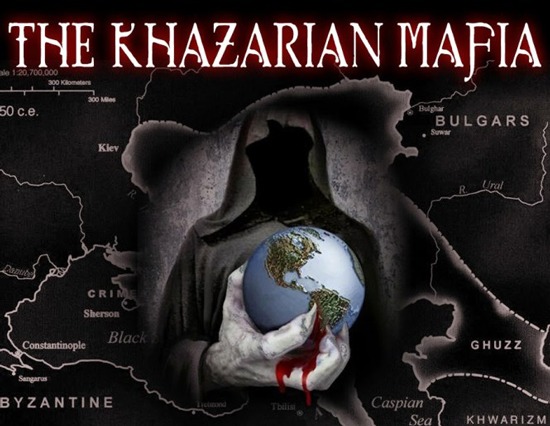
NEVER UNDERESTIMATE THE PURE UNADULTERATED EVIL OF THE KHAZARIAN TRIBE
The Khazarian Mafia, especially, is as vicious and malicious, repugnant and malevolent, vile and wicked, vengeful and vindictive as any horde to have raped, pillaged and plundered the Earth and her peoples.
READ: The Hidden History of the Incredibly Evil Khazarian Mafia
Submitted by Revisionist Historians for World Peace
State of the Nation
Were the whole world to know the hidden history about “the Ukraine” (which translates to “borderland”), there would be no Ukraine War today. The true perpetrators of this barbaric armed conflict would be found out and held fully responsible for all of their heinous crime sprees committed against the human race over the centuries. The many genocidal cataclysms perpetrated throughout the 20th century and right up to today would be properly laid at their feet. (See the abridged list that follows.)
The Armenian Genocide,
World War I,
Bolshevik Revolution,
Spanish Flu Pandemic,
The Great Depression,
Holodomor Genocide,
Chinese Civil War,
World War II,
Korean War,
The Holocaust,
Chinese Cultural Revolution,
Vietnam War,
Cambodian Genocide,
Rwandan Genocide,
Iraq War,
9/11 Terrorist Attacks,
The War on Terror,
Afghanistan War,
Syrian War,
Libyan War,
Ukraine War,
& COVID-19 Pandemic
all have one thing in common— the Khazarian Tribe.
As a matter of historical fact, each of these highly calculated genocides was carried out by the same Khazarian Tribe, which ALWAYS stays carefully hidden in the background during the fastidiously engineered evolution of every calamity of the modern era. See: Who’s really behind THE GREAT SCAMDEMIC?
With this correct understanding, the following accurate exposition of the true history of the long and complicated relationship between Russia and Ukraine can be much better comprehended. For the final outcome of the stealthily fabricated feud (by the Khazarian Tribe) between them will surely dictate the fate of humanity and future of the planet.
N.B. It’s of paramount importance as the reader peruses the excellent disquisition below to be aware of the common thread that runs through every century, every decade, every year, every phase of conflict between the Orthodox Christian Rus’ people and the Khazarian Jewish Zionists. That thread can be recognized by the relentless warmongering of the different elements within the Khazarian tribe variously known as the Ashkenazi banksters, Zionist warmongers and Khazarian mafia. The horrendous state of the Ukraine today is directly due to the incessant warmongering of the most recent generation of Khazarian tribals—the Neocon Zionists—who effectively dominate the Zio-Anglo-America Axis of power that dominates the world today.
Egor Kholmogorov: The intertwined roots of history explain why Russia can’t let go of Ukraine
Centuries of shared history mean that the fate of Kiev will always remain Moscow’s core interest
By Egor Kholmogorov
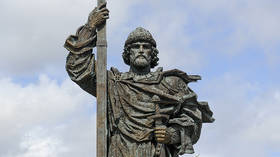
In August 1948, the US National Security Council issued memorandum (NSC 20/1 1948), requested by then Defense Secretary James Forrestal. The document described American objectives with respect to the Soviet Union.
A significant part of the memorandum focused on Ukraine. American analysts were convinced that the territory was an integral part of greater Russia, and it was highly unlikely that Ukrainians could exist as an independent nation. Most importantly, it noted, any support given to separatists would be met with a strong negative reaction by Russians.
“The economy of the Ukraine is inextricably intertwined with that of Russia as a whole … To attempt to carve it out of the Russian economy and to set it up as something separate would be as artificial and as destructive as an attempt to separate the Corn Belt, including the Great Lakes industrial area, from the economy of the United States…
Finally, we cannot be indifferent to the feelings of the Great Russians themselves … They will continue to be the strongest national element in that general area, under any status … The Ukrainian territory is as much a part of their national heritage as the Middle West is of ours, and they are conscious of that fact. A solution which attempts to separate the Ukraine entirely from the rest of Russia is bound to incur their resentment and opposition, and can be maintained, in the last analysis, only by force,” read the report.
It seems like today’s American establishment and media have forgotten something that was obvious to US analysts and politicians at a time when America was the only superpower with nuclear weapons. It would appear that the White House and EU now believe they can make Russians think of Ukraine as a different country through force and sanctions threats.
If the West is successful in its attempts to “deter” Russia, it will get its reward – long-lasting resentment from Russians, who will view the US-led West as a force that prevents them from managing a big chunk of their historic land.
Why do Russians think of Ukraine as part of Russia?
The first important factor is personal ties.
Many Russian citizens were born in Ukraine, but they don’t think of themselves as Ukrainians – especially not in the sense understood by the Kiev government today. Even more Russians have relatives in Ukraine. It would be almost impossible to find a Russian citizen without any family ties to Ukraine.
Russians see it as the land of their forefathers – quite literally, as they can show you the graves of their ancestors and the land where their houses stood.
When the administrative boundaries between the republics of the USSR turned into real borders in 1991, eight million ethnic Russians became ‘Ukrainians’ on paper. Kharkov in Ukraine and Belgorod in Russia, for example, are essentially twin cities that were founded by Russian tsars as frontier fortresses against the Crimean Tatars in the mid-17th century. After the Soviet Union’s collapse, they ended up on the opposite sides of the border. Country houses belonging to residents of the Russian city were now in Ukraine and vice versa. People from Kharkov would now have to travel to a different country to get to their dacha.
Today, Russians in Russia are puzzled – why does the regime in Kiev think it has the right to make decisions about their land?
As a result, many support the so-called separatists in what was the east of Ukraine. The term is a tricky one though, as a Russian may consider the regime in Kiev to be separatists, while activists in Crimea or in the Donbass have actually separated themselves from the separatists and, by that logic, could be considered unionists. Activism in Crimea, the movement in the Donbass, and the protests in Odessa that were brutally repressed, back in 2014, are part of unionism in the context of one greater Russia, not separatism.
Many Russians not only lived but also worked in Ukraine, which was a key industrial area in Russia. Its industrial development can’t be attributed to Ukrainian national character – it was the tsars and then the Soviet authorities that focused on this region’s growth. The industrial density of eastern Ukraine could only compare to that of Germany’s Ruhr.
There are a significant number of Russians who worked for Ukrainian plants and factories at one point or another – manufacturing aircraft carriers, helicopters, spacecraft components, etc. These were elements of the complex economic system of the huge Soviet superpower. Independent Ukraine didn’t need any of that.
The political and economic elites of independent Ukraine treated the industrial ‘dowry’ they inherited not as a complex system in need of maintenance, but as wild walnut trees that they should harvest while the nuts still hung on the branches.
The Ukrainian leaders’ attitude towards the powerful gas transportation system that had been left to them by the USSR was characteristic – they perceived it as a tool for blackmail. Unable to create or improve the system, they threatened to block or destroy it if they did not receive more money for the right to pump gas through ‘their’ territory.
Hence the hysterical reaction of the Ukrainian elites to the construction of the Nord Stream 2 gas pipeline, linking Russia directly to Germany. The fact that the Western powers have supported this view has led to the largest gas crisis in European history.
Russians living in Russia, as well as those living in Ukraine, cannot understand why Ukrainian land should be used by NATO. In Russia, Ukraine’s possible accession to the US-led military bloc is not construed as a free choice made by the country in its own security interests, but as a means for the West to build advance bases for launching a direct attack on Moscow.
Do the Russians have historical grounds for considering this land their own, and for seeing the Kiev regime and NATO as the actual occupiers of this land? Definitely, in my view.
Kiev in modern Ukraine, Polatsk in contemporary Belarus, and Novgorod, Smolensk, and Rostov in today’s Russia were one state in ancient times – Rus.
Though Kiev, the ‘Mother of Russian cities,’ was the capital of this state, Novgorod, which is now part of Russia, played no lesser a role. Amazingly, anthropologists in northern Russia’s Arkhangelsk Region have recorded epic ballads about Prince Vladimir and his warriors, who baptized Rus, which are similar in many ways to legends about King Arthur and the knights of the round table. It is therefore obvious that the local population retained a direct cultural connection with the population of ancient Kiev and Russia. At the same time, no similar ballads have been preserved in modern Ukraine.
Kiev was almost destroyed as the result of the Mongol invasion by Genghis Khan’s grandson, Batu Khan, in 1240, and the fate of the inhabitants in different parts of Rus was divided after that. The eastern regions became vassals of the Mongols (Tatars) but continued to be ruled by direct male descendants of Prince Vladimir. The city of Moscow, with princes from this house, gradually gained hegemony and created a state that managed to gain independence.
A different fate awaited the inhabitants of Western Russia. The cities there lost the power of Prince Vladimir’s descendants, as well as their historical connection to ancient Kiev. They were conquered by Lithuania, which soon merged with Poland to form a single state – the Polish-Lithuanian Commonwealth. Since these lands were cut in half by the practically impassable Polesie Marshes, two different groups of Russian origin emerged there during the Middle Ages: Belarusians to the north of the marshes, and ‘Little Russians’ to the south.
The Muscovite princes, who became tsars in 1549, always proclaimed their right to these lands and demanded their return from Poland, leading a slow kind of ‘Reconquista’. Poland lost the support of its Little Russian and Belarusian subjects in this struggle after it announced the religious Union of Brest in 1596 and began persecuting the Orthodox Church and its adherents. An Orthodox resistance movement emerged in the territories of Little Russia shortly thereafter.
The resistance’s strike force was the Cossacks – a community of free warriors that assembled in the steppe for battles with the Tatars and Turks. A Cossack could be a native of any country who professed Orthodox Christianity and was ready to fight for it. As Poland progressively persecuted the Orthodox religion, the Cossacks increasingly raised their sabers against it. One of the episodes in this struggle was described in a historical novella entitled ‘Taras Bulba’ by Nikolai Gogol. Although he was born in Poltava, which is now in modern Ukraine, the great author always wrote in Russian and criticized acquaintances who tried to create a separate ‘Ukrainian’ language.
In 1648, the leader (hetman) of the Cossacks, Bogdan Khmelnitsky, sparked a great uprising against Poland in defense of oppressed Orthodoxy. After winning a number of victories, he triumphantly entered Kiev and was met by church leaders. He then created a state – the Zaporozhian Host – which in many ways resembled the rebellious republics of the Donbass now recognized by Russia.
In 1654, after the resolutions of a Zemsky Sobor (a kind of parliament representing feudal classes) in Moscow and a Rada (a kind of people’s assembly) in Pereyaslavl near Kiev, Khmelnitsky’s state became part of Russia.
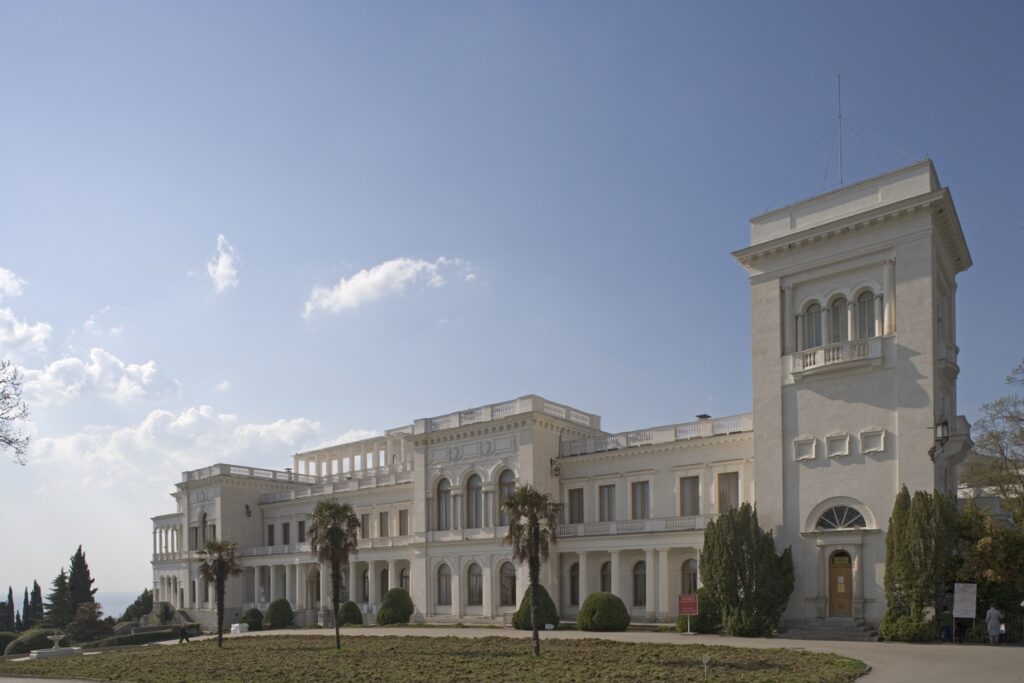 Livadia Palace created as a summer retreat for Tsar Nicholas II and served as the location for the Yalta Conference in 1945, Yalta, Crimea. © DeAgostini / Getty Images
Livadia Palace created as a summer retreat for Tsar Nicholas II and served as the location for the Yalta Conference in 1945, Yalta, Crimea. © DeAgostini / Getty Images
Tsar Aleksey Mikhaylovich was declared ‘Tsar of All Great, Little, and White Russia’ and began a grueling 13-year war with Poland, which ended with a partial victory – the lands on the left bank of the Dnieper were ceded to Russia, and the Russian Tsardom bought Kiev, the ancient capital of Rus on the right, for 146,000 silver rubles and seven tons of silver, which the richest Polish families divided among themselves.
Subsequently, many Little Russians from the territory of modern Ukraine moved north and settled throughout the vast reaches of Russia, making careers both in the church and at court. The word ‘Ukraine’ was not used as a place name at all during this period – in both Russian and Polish it meant ‘borderland’ or ‘frontier’. Its use as a name referring to the territories around Kiev only began in the 18th century, when these lands really did become a borderland during the constant wars between Russia and Turkey.
The integration of Little Russians into Russia was not even disrupted by the adventure of Hetman Mazepa, who betrayed Peter the Great out of personal interests and sided with the Russian leader’s enemy King Charles XII of Sweden. Mazepa was abandoned by everyone except his personal guards, and a fierce guerrilla war began against the Swedish troops that entered the territory of modern Ukraine. The first attempt to exploit the concept of ‘Ukrainian separatism’ ended in disaster for the party that tried to employ it.
By the middle of the 18th century, the integration of Little Russians and Russia was extremely tight. Singer and musician Alexey Razumovsky, born near Chernigov, became the secret husband of Peter’s daughter, Empress Elizabeth Petrovna. Moreover, the brother of this ‘Night Emperor’, Kirill, was simultaneously the hetman of the Zaporozhian Host and president of the St. Petersburg Academy of Sciences. Later, his numerous legitimate and illegitimate descendants formed an influential clan in the aristocracy of the Russian Empire.
The new empress, Catherine II, abolished the Zaporozhian Host and relocated the remnants of the Cossacks to the Kuban, in the North Caucasus. She also decisively conquered the steppes of southern Russia from the Tatars and Turks and, along with her secret husband, Prince Potemkin, founded a new part of Russia there – Novorossiya. The population of this area was extremely diverse. First of all, there were peasant and ‘Great Russian’ parts of the country, but there were also Greeks, Serbs, and a lot of Germans invited by the Empress, who were born in a small German principality. In fact, Novorossiya bore little resemblance to old Little Russia.
Novorossiya was the Russian equivalent of the New World, except that it wasn’t separated by an ocean. In the 19th century, industry was actively developed in the city now called Donetsk, commerce blossomed in Odessa, which was founded by a Spanish nobleman in the Russian civil service named De Ribas, and resort areas began to sprout up in Sevastopol and Crimea, bizarrely mixed with naval bases.
During the three partitions of Poland, which Russia participated in along with Prussia and the Austrian Empire, Catherine II finally finished the work begun by Aleksey Mikhaylovich. Russia reunited almost all the lands belonging to ancient Rus, along with their peasant populations, which had preserved the Russian language and maintained Orthodox Christian traditions.
The inhabitants of these territories began to return to their Russian identity. The fate of the family of the great Russian writer Dostoevsky can be taken as an example. The writer’s grandfather was a ‘Uniate’ priest at a Catholic Church near Vinnytsia, which is located in modern Ukraine, but returned to Orthodoxy after Russia annexed the territory. The writer’s father went to Moscow and made a brilliant career as a military surgeon. And Dostoevsky himself became a great writer who once penned: “The master of the Russian land is solely Russian (Great Russian, Little Russian, Belarusian – it’s all the same).”
In the partition of Poland, Russia did not go beyond the borders of ancient Rus and even ceded the Old Russian city of Lvov to Austria. However, all the members of the privileged classes on these lands considered themselves Poles, and the land to be Polish, so they waged a stubborn struggle against the Russian government, both openly and clandestinely. As part of this battle, they began to spread the idea that the peasant population of western Russia was not Russian, but ‘Ukrainian’, a separate people that was closer to the Poles. Therefore, Russia had no right to these territories, the propaganda claimed.
Some young Russian intellectuals embraced this idea during the ‘Springtime of the Peoples’, a series of revolutions that shook Europe in the mid-19th century, when original nationalities were discovered, and even sometimes invented. Ukrainophiles like the acclaimed genius of Ukrainian literature, Taras Shevchenko, collected Little Russian songs and wrote poems in a similar style.
Ukrainophile propaganda was met with hostility by both Russia’s imperial government and Russian society, which hadn’t felt any difference at all between the lands of Little Russia and the rest of Russia for a long time. The life of Little Russians did not seem to be anything extraordinary in light of the much more colorful lives of the Don, Kuban, and Terek Cossacks. And most importantly, the majority of those pushing this propaganda ended up disappointed in it themselves – when they realized that this idea primarily served the interests of the Poles, the enthusiasm for Ukrainophilism cooled considerably.
However, the Ukrainian idea survived thanks to Austria, which provided an academy dedicated to Ukrainian studies in the city of Lvov, as well as a generous subsidy to Ukrainophile historian Mikhail Grushevsky. Torn apart by ethnic conflicts, the Austrian Empire had two primary objectives. Firstly, to prove that those living in Galicia and its capital, Lvov, which belonged to it at the time, were not Russian, but Ukrainians, who were an entirely different people, because this would mean that Russia had no right to claim this land. Secondly, to prove to the Poles living in Lvov that they had no right to this city either. Grushevsky began to construct a Ukrainian historical myth revolving around Galicia. He also published a Ukrainian language newspaper, inventing several new ‘Ukrainian’ words for each issue.
The moment of truth came during the First World War, when Austria committed real acts of genocide against those in Galicia who displayed a political or cultural orientation towards Russia. More than 30,000 Galician ‘Muscovites’ and representatives of small ethnic groups who spoke their own Russian dialects – Rusyns and Lemkos – were thrown into the Thalerhof and Terezin concentration camps, the predecessors of Auschwitz. Thousands of people there were tortured by Austrian guards and died of hunger or disease.
The inhabitants of southern Russia captured by the Austrians during the war were placed in special camps where Grushevsky’s followers tried to inspire them with the belief that they were Ukrainians. This attempt ultimately failed, however. In a letter to his friend Inessa Armand, Vladimir Lenin, who himself maintained close contacts with Austrian and German special services, described an escaped prisoner’s account of this “experiment,” in which 27,000 people forcibly participated, as follows: “Ukrainians were sent clever lecturers from Galicia. Results? Only 2,000 were for ‘independence’ … after a month’s efforts by the propagandists!! Others flew into a rage at the thought of separating from Russia and going over to the Germans or Austrians. A significant fact! It’s undeniable that … the conditions for Galician propaganda are most opportune. And yet the proximity to the Great Russians prevailed!”
Nevertheless, after seizing power in Russia, Lenin recognized the self-proclaimed Ukrainian People’s Republic headed by Grushevsky in Kiev. Then, during the civil war against the White defenders of ‘a united and indivisible Russia’, he demanded that his comrades in arms emphasize – or at least pretend – that an “independent communist Ukraine” existed.
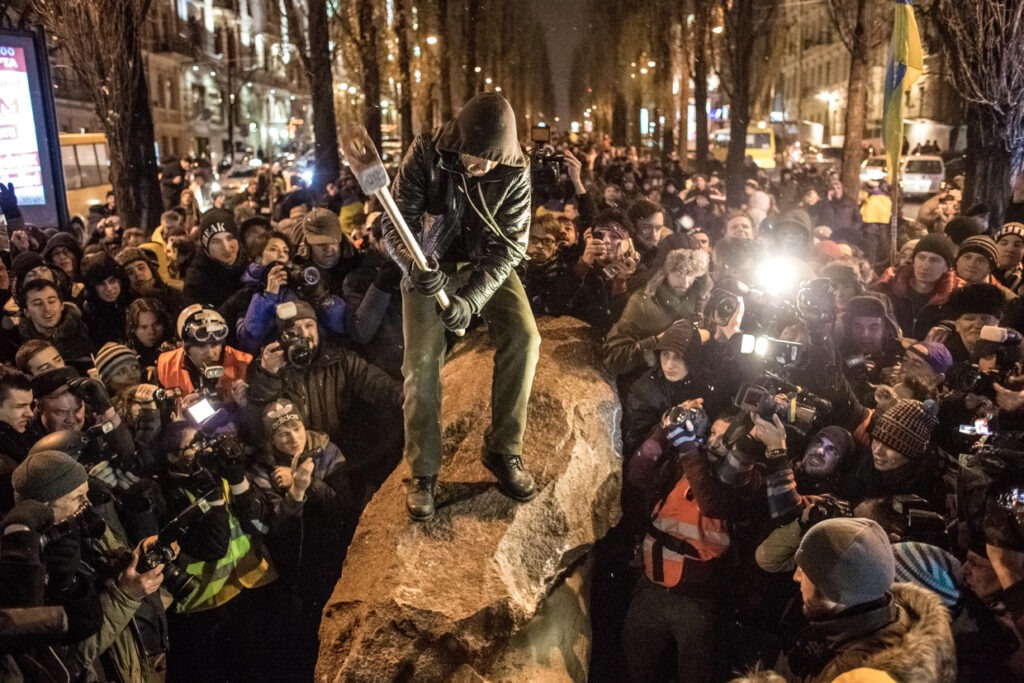 Protesters hammer at the toppled statue of Lenin on Kiev’s Bessarabska Square. © Sputnik / Andrey Stenin
Protesters hammer at the toppled statue of Lenin on Kiev’s Bessarabska Square. © Sputnik / Andrey Stenin
Perfectly aware of how unacceptable Ukrainian propaganda was to the masses, Lenin, nevertheless, insisted on creating a ‘Ukraine’ in order to weaken “the Great Russian oppressor,” as he called the Russian Empire’s leading ethnic group. It was to protect Ukraine from ultimately dissolving into Russia that Lenin rejected Stalin’s plan to turn peripheral areas into autonomous regions within Soviet Russia. Instead, he insisted on creating a Union of Soviet Socialist Republics, which is described in its statutory documents as a rather loose confederation with a right to exit. Current Ukraine dates back to the ‘Ukrainian Soviet Socialist Republic’ (Ukrainian SSR) that was created within the framework of this Leninist project.
The problem was, there were practically no Ukrainians in Soviet Ukraine, so the Soviet government took an unheard-of step – it invited its ideological enemy, Grushevsky, the former president of the Ukrainian People’s Republic, to the Ukrainian SSR and entrusted him with carrying out the ‘Ukrainization’ of public education. For a decade and a half, schoolchildren there could only receive a school education in Ukrainian, using Grushevsky’s textbooks.
The campaign in government ministries and departments was no less tough. Officials, including those with no ideological bent – who dealt with agriculture, for example – were required to study the Ukrainian language and use it at work. Moreover, they were dismissed from the service for displaying an ignorance of the language or an unwillingness to learn it. Interestingly, the number of those sacked was quite large, which demonstrates that many people were still resisting Ukrainization at the time.
But, of course, not everyone resisted. There were many ‘chameleon’ officials in the Communist Party. For example, the future leader of the USSR, Leonid Brezhnev, who led the nation during the Cold War, listed his ethnic origin as ‘Ukrainian’ in some forms, and ‘Russian’ in others. This goes to show that, in fact, there was no clear way to distinguish a ‘real Ukrainian’ from a ‘real Russian’.
Convinced that Ukrainization made it impossible for schools to produce literate people who were well-versed in technology (most of the USSR’s literature on science and technology always remained in Russian), Stalin began to limit the process. Subsequently, learning Russian became mandatory, and enthusiastic advocates of Ukrainism began to be persecuted as ‘bourgeois nationalists’.
However, even after this about face, the official Soviet regime diligently pretended that Ukraine was a ‘fraternal’ state, independent and separate from Russia. Ukraine was granted its own seat in the UN, separate from the USSR’s (the Russian Federation was not). The mosaics created in the Moscow Metro’s Kievskaya station presented a kind of iconography of the ‘history of Ukraine’.
However, Soviet Ukraine faced a new problem. In 1939, Stalin annexed the regions of Western Ukraine that had been captured by Poland after the collapse of the Russian Empire and assigned them to the Ukrainian SSR. And with them came Lvov and Galicia, which had never been part of Russia. As a result of Poland’s strict national policy, a radical political movement emerged in this area led by Stepan Bandera dubbed the ‘Ukrainian Insurgent Army’. This group’s political structure greatly resembled that of Pol Pot’s Khmer Rouge, only under a nationalist rather than communist banner. The Poles were the first object of Bandera’s hatred – in 1942, with support from Hitler, his group organized the terrifying Volhynia Massacre of the Polish population.
As German collaborators, Bandera and his comrades in arms committed many crimes against Jews, Poles, and Russians during the Second World War. While the Red Army advanced against the Germans, Bandera’s people increasingly turned their weapons against it and shifted the hatred they harbored against the Poles and Jews to Russians and Communists. The Banderists waged a fierce guerrilla-terrorist war in the western part of the Ukrainian SSR for many years after the Second World War ended. When the partisans were finally defeated, they went underground, but passed their radical ideology on to the younger generation of Ukrainian nationalists.
When the Soviet Union weakened and collapsed in 1991, three factors came together in Ukraine. Firstly, the official communist government in Kiev was given the opportunity to take advantage of the constitutional opportunities left by Lenin to create its own state. Secondly, amidst the complete ideological vacuum in this post-communist Ukraine, it was the heirs of Bandera, with their rabid racism directed at Russians, who took up the new country’s ideological banner.
At the same time, the majority of Ukraine’s population fell victim to this process, both those officially listed as ‘Ukrainians’ and ‘Russians’. Most had seen the USSR as a Greater Russia, and the Ukrainian SSR where they lived as one of the corners within it. They did not know and did not want to learn any language other than Russian. If their grandmothers had taught them to speak the rural Ukrainian dialect in childhood, they saw it as a way of making a joke. And suddenly, through schools, propaganda, and political speeches, these people were hit by powerful pressure to become ‘Ukrainian’ from what had recently been a totalitarian communist state.
The Russian Federation had been experiencing a long crisis with respect to national identity and сconsciousness, and it was Ukraine that pulled it out of this muddle. As predicted in 1948 by US National Security Council analysts, the Russians became enraged on learning that propaganda was being used to make some Russians see themselves as ‘non-Russian’.
The first wound to Russian pride was inflicted back in Soviet times, when Malenkov and Khrushchev transferred Crimea from the RSFSR (Russia) to the Ukrainian SSR (Ukraine) in 1954. Russians considered this peninsula to be their own land, steeped in the blood of two heroic defenses of Sevastopol (1854-55 and 1941-42). Though the outward manifestation of this transfer was limited to changing the color of Crimea on maps from pink to green, it was perceived as an ethnic insult by Russians in the USSR. Sevastopol was the ‘city of Russian sailors’ (as was sung in a famous song) and no one dared argue with this. Russian indignation reached a boiling point after the peninsula became part of an independent Ukraine in 1991, and the government began to ban the Russian language there. The phrase “You will still answer for Sevastopol” from the popular movie ‘Brat 2’ became a nationwide meme.
Several waves of forced Ukrainization in the 20th century have convinced Russians that Ukrainian identity is not something stemming from ancient history and culture, but something that is instilled by propaganda. Like it or not, Russians in Russia see modern Ukraine’s hostility towards the Russian part of its population not as a free choice of ethnic identity, but as a disease that has arisen under the influence of propaganda that must be cured. The more assertively some Ukrainians declare that they are not brothers to Russians, but enemies, that they want to be with NATO, and not Russia, the greater the desire on the other side is to save and cure them, whatever that means.
The trick of the West – to appeal to the population of modern Ukraine’s sense of unique identity – is even more dangerous in terms of provoking conflict. The reaction of Russians to these appeals is similar to that of the parents of a kidnapped child who has been turned against them. It’s better not to get in their way.
To sum up: Russians have many vital and historical reasons to consider Ukraine their land, and to see Ukrainians, even those most hostile to Russia, as their own people, who are in need of protection (including from brainwashing). The West’s claims that it has a right to exercise hegemony over Ukraine because ‘Ukraine is not Russia’ is seen by Russians in Russia as false and predatory.
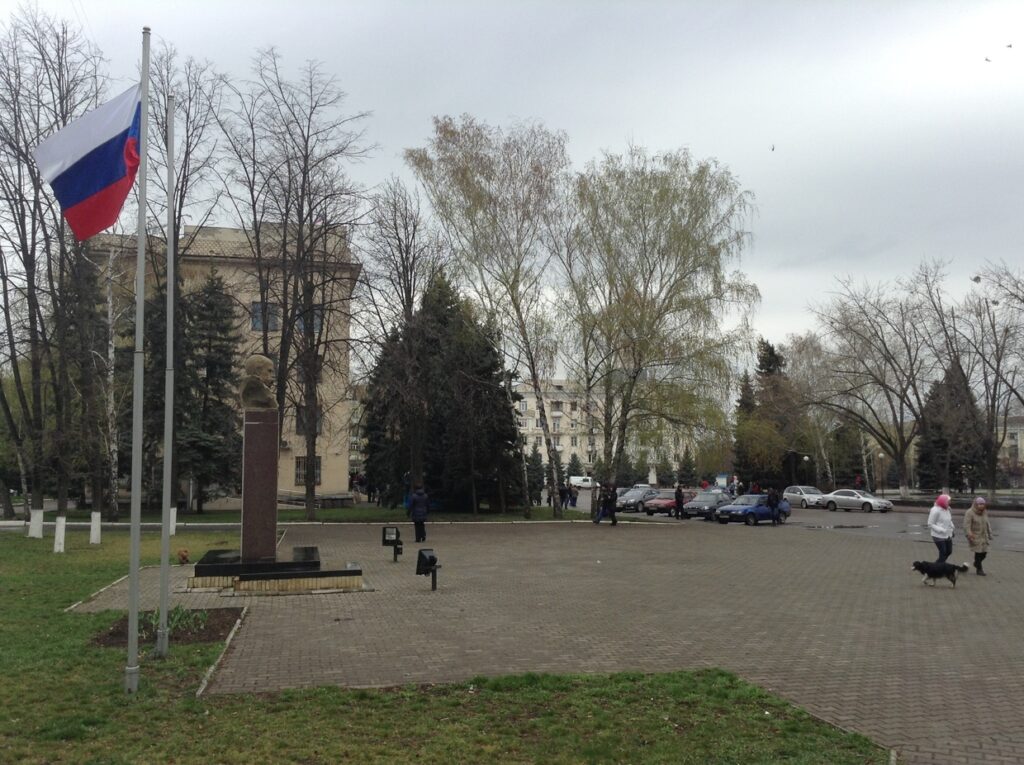 Lenin Square and the monument to Taras Shevchenko in the town of Kramatorsk, Donetsk Region. © Sputnik
Lenin Square and the monument to Taras Shevchenko in the town of Kramatorsk, Donetsk Region. © Sputnik
Moreover, they consider this attitude a land grab directed at territory Russians consider their own. One of the decisive factors in Russians’ ethnic awakening during the Putin era has been the resistance to this attempt to tear Ukraine away. The president himself was not the initiator of this process but reflects the national mood.
There is no way to get Russians to accept that Ukraine is somehow separate, except by brutal force. Russians will always see any world order that involves the separation of Ukraine from Russia as hostile. By supporting an ‘independent Ukraine’, the West will always have a tireless and relentless enemy in Russia and the Russians.
The question is why does it need this, and who benefits?





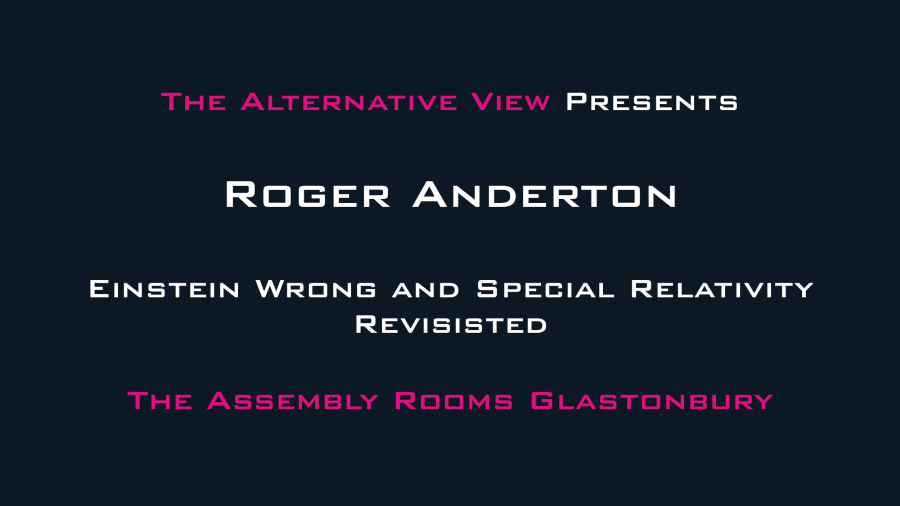
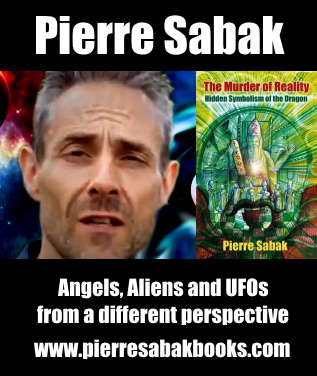







Interestingly I’ve been reading quite a bit about the Jews and their ancestry.
http://themillenniumreport.com/2016/04/leaked-report-israel-acknowledges-jews-in-fact-khazars-secret-plan-for-reverse-migration-to-ukraine/
https://www.truthcontrol.com/articles/serpent-bloodline-edomitekhazar-jews-and-sons-cain
Benjamin H Freedman The Balfour Declaration
https://www.youtube.com/watch?v=Y44lS_sOtaY
Ah, Gordon, I remember reading your first link. I remarked in a comment not long ago that I would try to remember where I read about reverse migration and now that I see it here I realise this was it! Thank you for refreshing my memory!
Thanks Danceaway for this interesting post, also Gordon, in pointing out who the Khazarian Mafia really are and their history of crime and their evil seed-line. They are literal Devils walking around in shoes and pants as the Americans say; not some spirit whispering in one’s ear. They are literally Satan’s children.
It could also be mentioned that Khazaria was the hub of the silk trade which they controlled being at the junction where routes branched off to the Middle East, Africa, western Europe, Scandinavia and London one of the most important terminals and toll point collected by the resident Khazars there. They are still there today after gaining sovereign status for the City of London. At the installing of the new Mayor, his sword bearer still wears a Khazarian fur hat!
Remarkable,newensign, the role of London runs so deep and is so embedded one wonders what could dislodge it. And Satan’s minions running around amongst us. What a picture it conjures up.
Yes it is surprising, I surprised myself when doing the research for a PowerPoint presentation and came across this saying: “Nothing happens in the world without the City of London being involved or knowing about it” There are no roads in the City, they are other names such as street, lane etc., that is because roads take you to another place. In London, you have arrived at the most important destiny – Nowhere else to go!
I remember an article possibly on Tap, I’ll try to dig it out which was about the Great fire of 1666 clearing the space for the City. A law or act of parliament was made in French which few understood, giving locals little chance of keeping the space they owned.
https://tapnewswire.com/2012/03/great-fire-of-london-set-deliberately/
No roads! Of course, it is all tiny lanes and streets! I never made the connection! Thank you for this almost quaint bit of information!
You are quite right Ian, see below. That was when we all became slaves of the state. When we allow for the changes to the calendar it occurred on 911
Cestui Que Vie Act 1666 – Existence of Life
London in 1666, during the black plague and great fires of London, Parliament enacted an act behind closed doors, called Cestui Que Vie Act 1666.
The act being debated was to subrogate the rights of men and women, meaning all men and women were declared dead, lost at sea/beyond the sea. (back then operating in Admiralty law, the law of the sea, so lost at sea).
The state (London) took custody of everybody and their property into a trust. The state became the trustee/husband holding all titles to the people and property, until a living man comes back to reclaim those titles, he can also claim damages.
When CAPITAL letters are used anywhere in a name this always refers to a legal entity/fiction, Company or Corporation no exceptions. e.g. John DOE or Doe: JANE
1) CESTUI QUE TRUST: (pronounced setakay) common term in New Zealand and Australia
2) STRAWMAN: common term in United States of America or Canada
These are the legal entity/fiction created and owned by the Government whom created it. It is like owning a share in the Stock Market, you may own a share… but it is still a share of the Stock.
Legally, we are considered to be a fiction, a concept or idea expressed as a name, a symbol. That legal person has no consciousness; it is a juristic person, ENS LEGIS, a name/word written on a piece of paper. This traces back to 1666, London is an Independent, City, State, just like Vatican is an Independent City State, just like Washington, DC is an Independent City State.
The Crown is an unincorporated association. Why unincorporated? It’s private. The temple bar is in London, every lawyer called to the “bar” swears allegiance to the temple bar. You can’t get called without swearing this allegiance.
Our only way out is to reclaim your dead entity (strawman) that the Crown created, become the executor and then collapse the called Cestui Que Vie trust and forgive yourself of your debts and then remove yourself from the admiralty law that holds you in custody.
When London burned, the subrogation of men’s and women’s rights occurred. The responsible act passed… CQV act 1666 meant all men and women of UK were declared dead and lost beyond the seas. The state took everybody and everybody’s property into trust. The state takes control until a living man or woman comes back and claims their titles by proving they are alive and claims for damages can be made.
This is why you always need representation when involved in legal matters, because you’re dead.
The legal fiction is a construct on paper, an estate in trust. When you get a bill or summons from court it is always in capital letters, similar to tomb stones in grave yards. Capital letters signify death. They are writing to the dead legal fiction. A legal fiction was created when someone informed the government that there was a new vessel in town, based upon your birth.
Birth Certificates are issued to us by the Doc. just as ships are given berth Certificates at the Dock. It’s about commerce. We come from our mothers waters. Your mother has a birth canal just like a ship. The ship moves by the sea current just as we are able to move by the currency.
All this information relates to how the general public are still legally tied through Maritime Admiralty Law. Through this ancient legal construct we can be easily controlled and duped. Learning about your legal fiction helps you to unlock yourself. Otherwise you are just an empty vessel floating on the sea of commerce. Parents are tricked into registering the birth of their babies.
In about 1837, the Births, Deaths and Marriages act was formed in UK and the post of registrar general was established. His job was to collect all the data from the churches which held the records of birth.
Regis from Queen or Crown
All people are seen to be in custody of,” The Crown”. This allows people to function in commerce and to accept the benefits provided by state. We have to understand who we are as men and women and how we can relate in the system. The City of London is a centre for markets, where merchants work. Then there is Mercantile Law. It comes from Admiralty Law. Look at the symbols in your City Courts that relate to Admiralty.
So where you have commerce and money, you also have “justice” and “injury”. You need to understand the bankruptcy before you can understand the judiciary. We have accepted the claim to accept the summons, yet ONLY the dead can be summoned. There is an obligation to accept any liability which has been created.
We are operating in Admiralty
A not guilty plea, or ANY plea admits jurisdiction. The strawman, aka legal fiction is always guilty. Barristers and solicitors make a living out of creating controversy. By creating a controversy you become liable for the case.
Honour and dishonour
To remain in honour you have to accept a claim and settle (discharge) it. Then you add conditions, ie. “I accept on proof of claim and proof of loss”. This gives the liability back to them. The legal fiction is always guilty. Only in the High Court, can the real man or woman appear. Games are played on courts, hence the name ‘court’. It is a game with actors (acting on acts). It has to be treated as a game and just business. Court room dramas are misinformation.
In the public, we’re operating in bankruptcy and you receive benefits. It takes a lot of time, effort and study to understand and use these tools. You have to be prepared to go fully through the process, get the right tool out of your toolbox at the right time.
People need to learn how to act as a creation of God rather than a creation of Man.
Thanks for that newensign, I’ll read it a couple more times before it sinks in. It’s so radically different to the usual terms we hear.
Ian R Crane tried to teach us much of this in an informal way, and was certainly aware of it himself.
What you havre written is so important that it is worth being a separate post. It is critical information.
I think the British Constitution Group and the New Chartist Movement promote this information as well.
https://www.newchartistmovement.org.uk/supporters/british-constitution-group
Thanks. Yes it is important, but I don’t think I am permitted to post, it won’t even allow me to add a JPEG although there is a box for it. Perhaps you could do it for me?
I will give it a try, but may have to ask for help from Mike as my tech skills are rudimentary. What should the title be if I do manage?
Please give me a couple of days; there is a Doctors for Covid Ethics symposium live stream about to start on UKColumn.org which will run until late evening. The first three were excellent, so this will probably be important as well.
Many thanks Danceaway I’m late replying being catching up with some jobs. I have done a header and lead in, but feel free to alter it if you think of something better. See below:
The 911 of the middle Ages – Important Information You Must Know
The Planned Great Fire of London in 1666 Enabled The Cestui Que Vie Act to be Passed, declaring all lost at sea and therefore dead. Thereby Most of the World would eventually become enslaved to the City of London.
A brief Look at the far reaching implications of this dastardly Act with hints on how to break the shackles
I think I have your treatise in draft form ready to publish, but will for a quiet time to prevent it being swamped. I would have liked to try to add a photo but am not yet adept at that! Perhaps if Tap sees this he will find and add one for us!! It deserves to have one!!
Thanks Danceaway. That was quick! If its any help here is a link to a picture in my Mega Store which is:
https://mega.nz/file/wMohgD7S#EqdPJZ7JVYQiy9NR1_QQ89mdG1FmpcFi66iPWYQMRVk
I hope your symposium on Covid you were watching was good?
Your picture is absolutely brilliant – so frustrating, I downloaded it, seemed to be able to copy it, but could not get it to paste in. Tried three or four times. So so sorry, as it would be a fantastic addition.
The symposium was a useful update, but overall slightly disappointing. Many good people trying very hard, but it is almost as if there is a ceiling they just cannot break through, or at least publicly. Seemingly no knowledge of the Khazarian situation or any of the offshoots. In disagreement with what is happening, but not understanding why or how it is happening.
I have been reading some of the plethora of comments under Iain Davis’ Part 5 Article, Ukraine, which has been posted on Off-Guardian; so many people know exactly what is going on geo-politically; they write extremely well, but have no audience but each other? I don’t know. But they are streets ahead of those in the symposium in overall knowledge. I noticed one of our commenters on The Tap was commenting there.
Re: newensign.
You did well to mention in four comments the City of London.
The City of London houses:
Rothschild controlled ‘Bank of England’
Lloyds of London
The London Stock Exchange
All British Banks
The Branch offices of 384 Foreign Banks
70 USA Banks
Fleet Streets Newspaper and Publishing Monopolies
Headquarters for Worldwide Freemasonry
Headquarters for the worldwide money cartel known as ‘THE CROWN’
The City of London is controlled by the Bank of England, a private corporation owned by the Rothschild family after Nathan Rothschild crashed the English stock market in 1812 and took control of the Bank of England.
Read more: https://www.sinhalanet.net/three-corporations-run-the-world-city-of-london-washington-dc-and-vatican-city
Interestingly, the City of London motto Domine, Dirige Nos, means Master, Guide Us, and can only be attributed to the Grand Master of Headquarters for Worldwide Freemasonry in the City of London.
The United Grand Lodge of England (UGLE) is led by the Grand Master, HRH The Duke of Kent, who was elected more than 50 years ago and is now UGLE’s longest-serving Grand Master.
https://www.ugle.org.uk/about-us/ugle-governance
Another interesting fact regarding the City of London is that they have in their Guild Hall two giant effigies (gods) of Gog and Magog who are mentioned in the book of Ezekiel chapters 38 – 39 and are paraded through the streets of London every second Saturday in November.
Gog and Magog are often cited as two individual characters but the reality is Gog is the ruler (King) and Magog is his lands were “Ma” refers to “land” of Gog.
Satan always copies God and was instrumental in 1917 through the City of London (Gog) financiers, Rothschilds, leading to the demise of the state of Palestine in favour of an Israeli Zionist state on May 14, 1948.
https://interactive.aljazeera.com/aje/2017/behind-balfour/index.html
Thanks for trying anyway Danceaway. Under the comments box it has a box to add file or JPEG, like you it never works for me!! I agree with what you say about certain good sites with useful information, but never say who the real enemy is! I think these are high quality disinformation sites like Qanon. I think also the same about some of the whistle blowing doctors. one of them for example said she was doing work with viruses which don’t exist but are the body’s own healing mechanism of getting rid of damaged cell material, so they are brainwashing people to believe viruses are real for the next pandemic!!
newensign, try choosing the file ie the jpeg, then add a short comment, just anything like this
BTW that was me in 1968, lol.